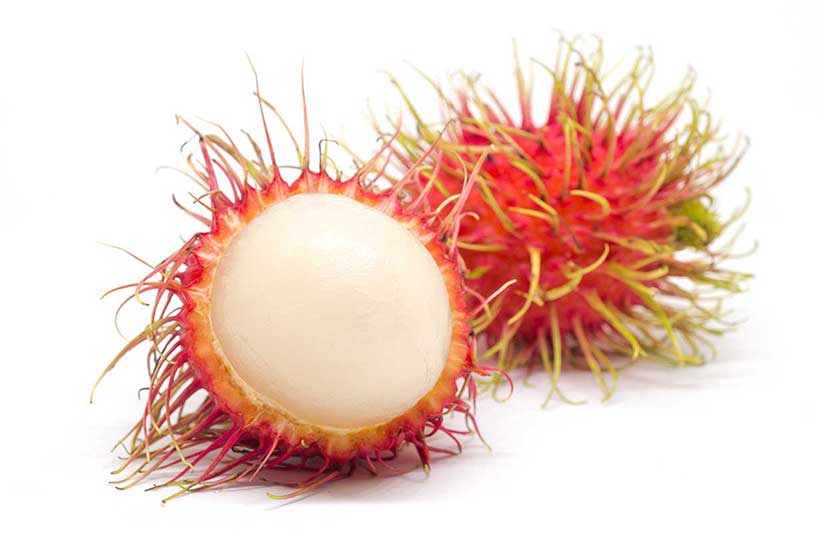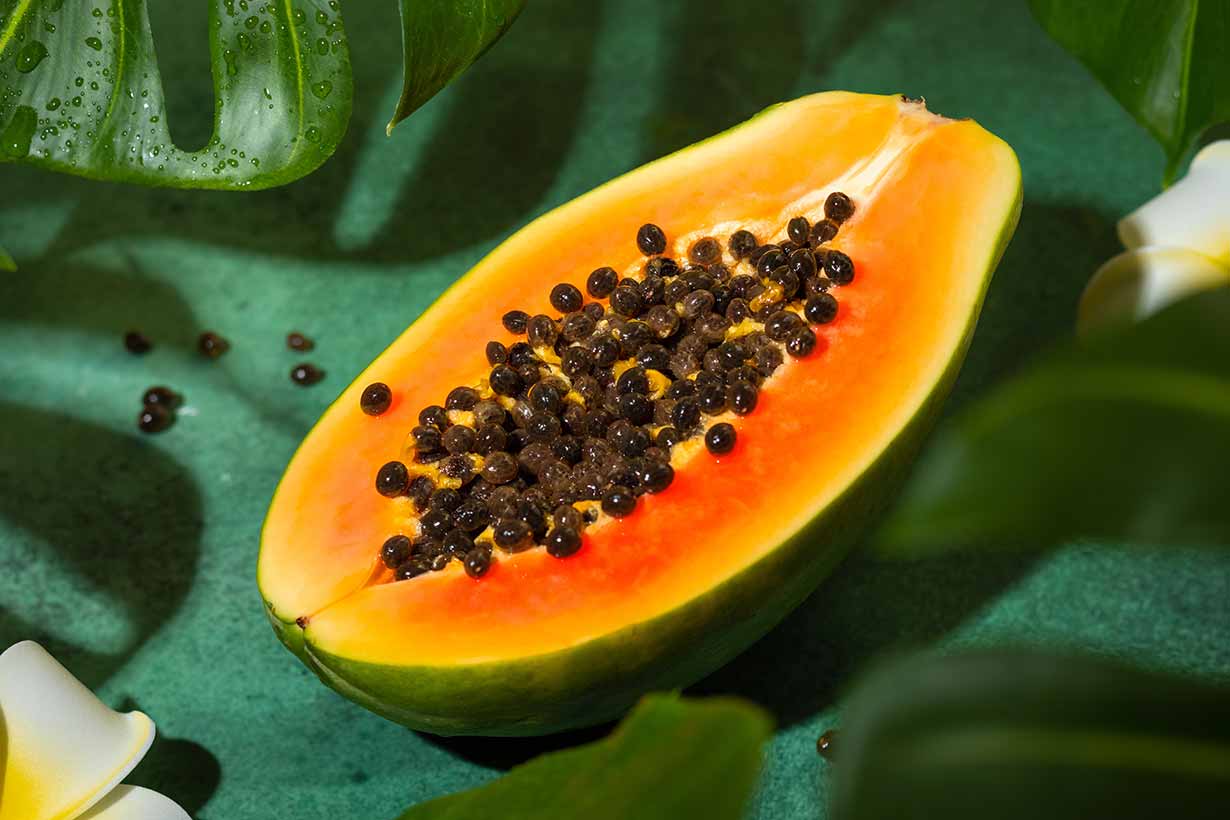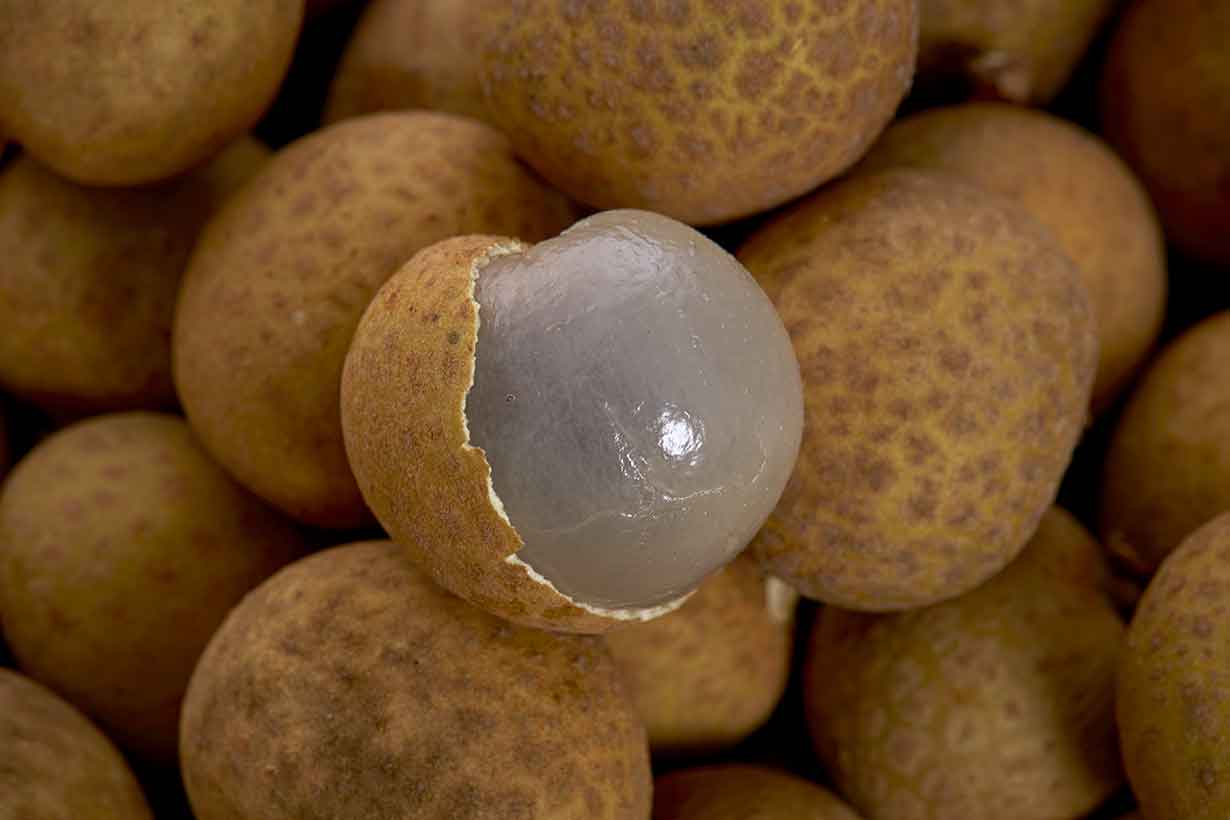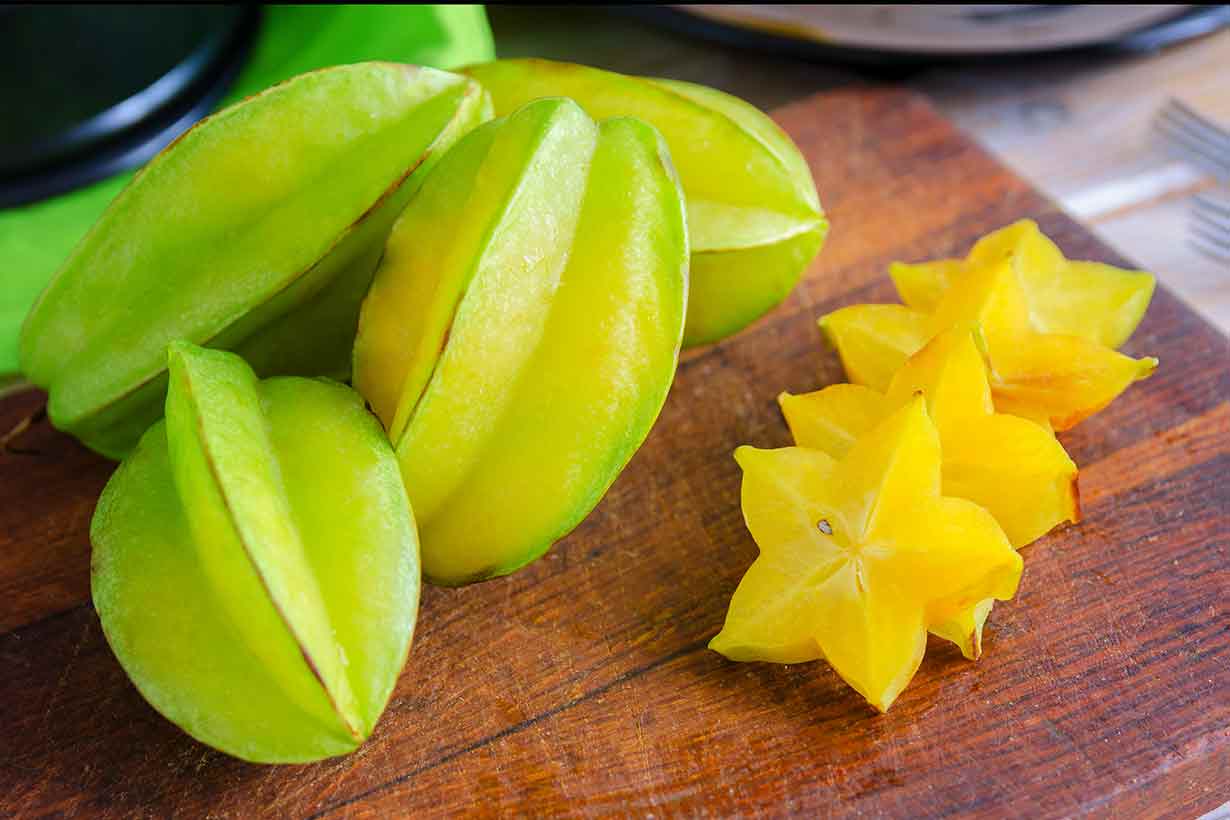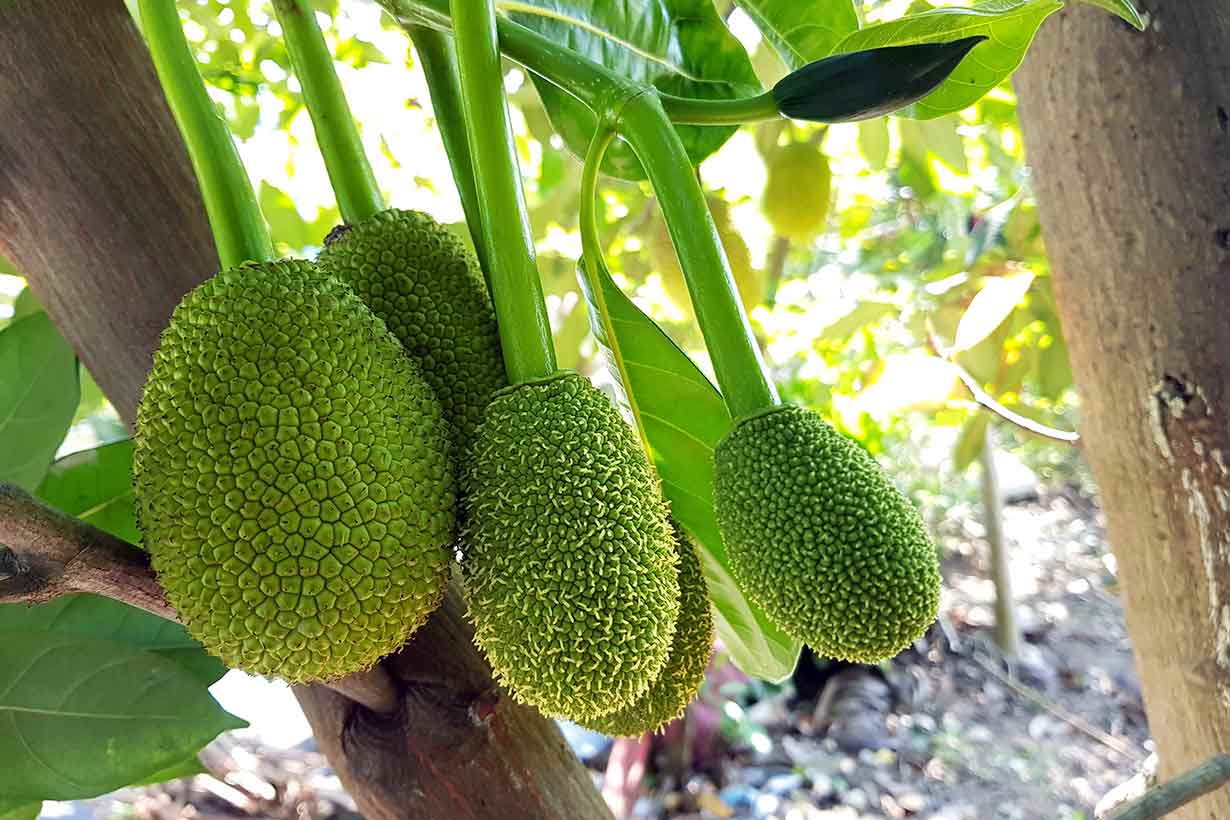Mango is one of the most popular fruits in the world, as evidenced by global production that lies at 55.4 million tonnes per year (1).
This tropical fruit is sweet and juicy, and it is known as the ‘king of fruits’ in some parts of the world.
Mango is a type of drupe fruit, which means that it has a fleshy exterior that surrounds a stone (seed) in the middle.
Although mangoes grow around the world, the fruit’s origins lie in South Asia, and it is particularly popular in India, Pakistan, and the Philippines. Mango is ‘the national fruit’ of these countries (2).
This article examines the nutritional values, potential benefits, and downsides of mango.
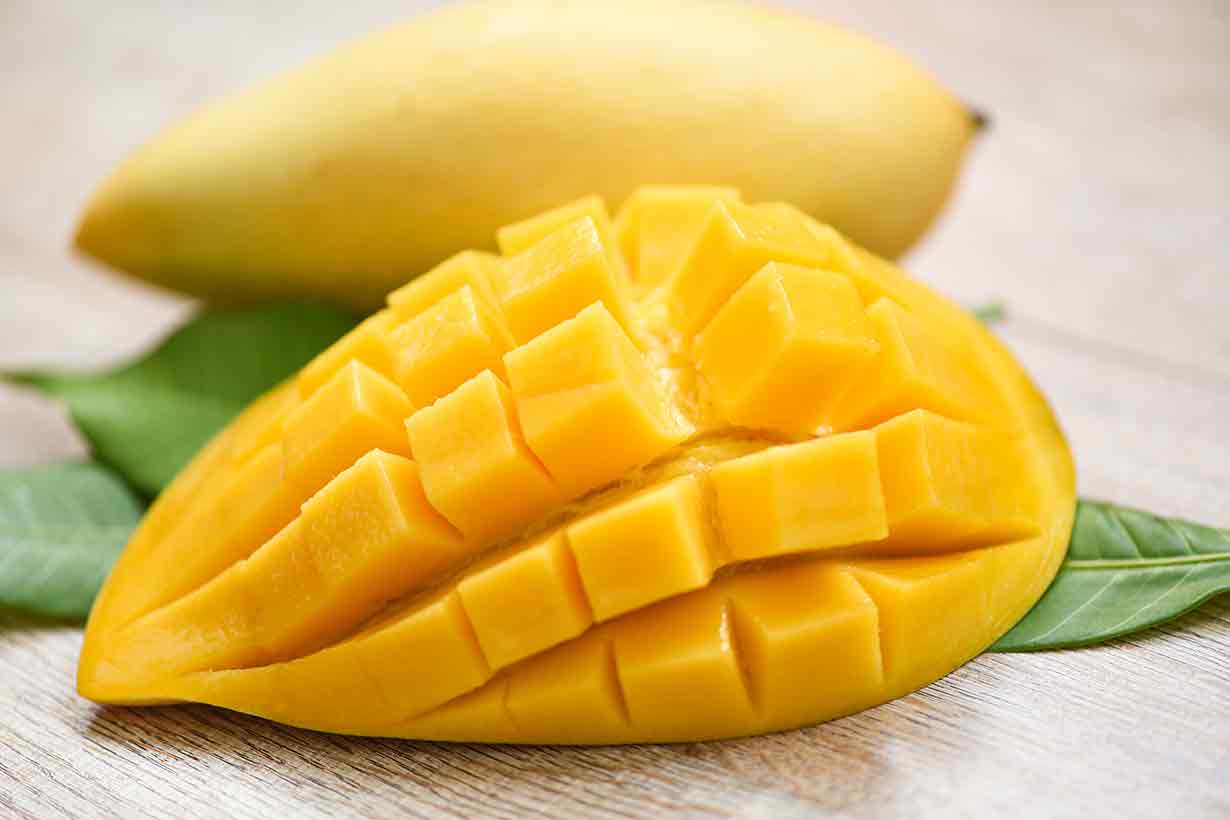
Nutrition Facts
Mangoes are primarily a source of carbohydrates, and they contain a good range of vitamins and minerals.
The following nutritional values for mango are sourced from the USDA’s nutritional database, and daily values have been calculated using the FDA’s published daily values (3, 4).
| Name | Amount | % Daily Value |
|---|---|---|
| Calories | 202 kcal | 10.1% |
| Carbohydrates | 50.33 g | 16.8% |
| Fiber | 5.38 g | 21.5% |
| Sugars | 45.90 g | |
| Fats | 1.28 g | 2.0% |
| Saturated | 0.31 g | 1.5% |
| Monounsaturated | 0.47 g | |
| Polyunsaturated | 0.24 g | |
| Omega-3 | 0.17 g | |
| Omega-6 | 0.06 g | |
| Protein | 2.76 g | 5.5% |
Vitamins
- Vitamin C: 136% DV
- Folate: 36% DV
- Vitamin B6: 24% DV
- Vitamin A RAE*: 20% DV
- Vitamin E: 20% DV
- Niacin (B3): 14% DV
- Pantothenic acid (B5): 13% DV
- Vitamin K: 12% DV
- Riboflavin (B2): 10% DV
- Thiamin (B1): 8% DV
- Choline: 5% DV
*RAE = Retinol Activity Equivalents
Minerals
- Copper: 41% DV
- Potassium: 12% DV
- Manganese: 9% DV
- Magnesium: 8% DV
- Phosphorus: 4% DV
- Calcium: 3% DV
- Iron: 3% DV
- Selenium: 4% DV
- Zinc: 3% DV
Mangoes Are An Excellent Source of Vitamin C
Similar to other tropical fruits such as cherimoya, star fruit and durian, mangoes offer high levels of vitamin C.
Mangoes provide 122 mg of vitamin C per fruit, which is equal to 136% of the recommended daily value for the vitamin (5).
With this vitamin C content, even half a mango would provide more than two-thirds of the recommended intake.
Vitamin C is an essential vitamin that plays a role in the human immune system, collagen production, and wound healing (6, 7, 8, 9).
Antioxidants and Polyphenols
Mangoes are a source of numerous antioxidants and polyphenolic compounds:
- Vitamin C
- Vitamin E
- Carotenoids: mangoes contain a range of different carotenoids, such as carotenes and lutein (10, 11).
- Mangiferin: mango is one of the primary dietary sources of this unique polyphenol (12).
- Flavonoids: mango provides various flavonoid polyphenols such as quercetin, kaempferol, and apigenin. Also, research shows that greater sun exposure during the growth of mango increases the fruit’s flavonoid and anthocyanin content (13, 14).
There are many cell (test tube) and animal studies showing the potential benefits of polyphenols. Furthermore, a higher intake of foods containing these compounds is associated with improved health outcomes (15, 16).
However, there is still much that we do not know about polyphenols.
On this note, human research into these compounds is ongoing, and the mechanism of action through which they may have potential benefits is still largely unknown (17, 18).
As for the relatively unique mangiferin polyphenol, this compound is a xanthone. Based on results from cell and animal studies, mangiferin is thought to have antioxidant, anticancer, and immunomodulatory effects (19).
That said, such studies use high-strength extracts, and there is no relevant research from human trials on mangiferin.
Regarding carotenoids, these are the yellow-pigmented compounds that give mango its yellow color.
For more information, see this article on yellow fruits.
May Potentially Help To Relieve Constipation
A recent pilot trial demonstrated that mango intake improved symptoms of constipation (20).
In this study, one group of nineteen participants consumed 300 grams of mango fruit daily for four weeks. A second control group of seventeen participants consumed a fiber-matched diet without mango for the same duration.
After four weeks, the mango group participants reported more ‘normal’ stool consistency and more frequent bowel movements.
The researchers suggested that polyphenols in mango may potentially explain these benefits that were over and above the benefits from the fiber-matched diet.
However, it is worth remembering that this was a small pilot trial, and further research is necessary to confirm this potential benefit of mango.
Regular Mango Intake Improves Vitamin A Status
Firstly, vitamin A and carotenoids are not the same things.
The human body needs to convert carotenoids (found in plant foods) to retinol (vitamin A) inside the body, and the conversion rate can be quite low (21, 22).
As a plant-based food, mango contains carotenoids rather than pre-formed vitamin A.
However, one trial investigated the effect that regular mango intake had on increasing vitamin A status. This trial was undertaken in young Gambian children to investigate mango supplementation as a potential strategy to prevent vitamin A deficiency (23).
The results of this trial demonstrated that mango supplementation with 75 grams of dried mango per day helped to maintain the children’s vitamin A status.
However, consuming the mango with a source of fat (5 grams) led to greater increases in vitamin A than mango alone.
The Nutrients In Mango Differ Depending on the Ripeness Level of the Fruit
An interesting recent study analyzed how the nutritional composition of mangoes changes depending on the ripeness level of the fruit (24).
The image below provides a quick overview of these changes as the fruit moves through different stages of ripeness.
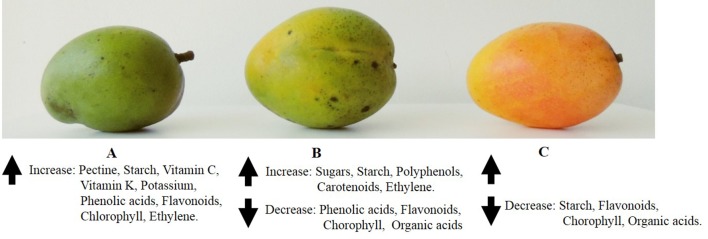
As we can see in the image, mango contains higher amounts of starch, vitamin C, potassium, vitamin K, and several phenolic acids in its immature, unripe state.
However, as the fruit begins to ripen, there is an increase in sugar, starch, polyphenol, and carotenoid content. At the same time, some phenolic acids and flavonoids decrease.
As the mango fruit fully ripens, the starch and flavonoid content starts to decrease, which likely plays a part in the sweeter taste of ripe mango.
Potential Downsides of Mango
One potential downside of mango is that it can potentially cause contact dermatitis and allergic reactions (25, 26).
It is important to note that mango allergies are extremely rare, so this will only be an issue for a small number of people.
However, mango peel contains high levels of an oily mix of compounds known as urushiol. As well as being present in mango peel, urushiol also occurs in poison ivy (27).
In rare cases, skin (or mouth) contact with urushiol can lead to symptoms such as swelling, rashes, and breathing difficulties (27, 28).
In extremely rare cases, mango allergy can potentially lead to an anaphylactic (severe allergic) reaction (29, 30, 31).
Aside from potential allergies, another consideration with mango is the fruit’s high sugar/carbohydrate content.
While there is nothing inherently wrong with dietary carbohydrates and fruit sugar, mango may be unsuitable for individuals following strict low-carb diets.
How To Eat Mango
While most people in the Western world eat fresh mango, many popular cooked South-Asian dishes feature mango.
The fruit can also be used to make a range of different food products, including juices, ice-creams, smoothies, jams, and dried fruit products.
Here are a few other interesting ways to consume mango.
Fresh Mango
While this one should need no explanation, cutting and dicing mango can be a bit more difficult than with some other fruit.
There is a helpful guide on how to easily prepare fresh mango here.
Creamy Mango Ice Lollies
For a healthier summer treat, it’s easy to make creamy mango ice lollies using nothing other than mango fruit and yogurt.
To do so, just combine a cup of chopped mango and a cup of yogurt and blend.
After blending, pour this mixture into some ice lolly molds and place them in the freezer. A few hours later and they will be ready.
The two ingredients can also be increased in the same ratios to make more: for instance, two cups of mango and two cups of yogurt will work well too.
For anyone without ice lolly molds, there are some good ones here (disclosure: affiliate link).
Pickled Mango
Pickled mango is a popular side dish in some countries, and it tastes completely different from fresh mango.
While it is somewhat of an acquired taste, pickled mango has a refreshing, juicy, sweet, and slightly sour taste.
Pickled mango products may be available at supermarkets, but if not, they are easy to find in Asian grocery stores.
Mango Chutney
Mango chutney is a popular condiment/sauce that features a mixture of mango, sugar, ginger, salt, and a range of different spices.
Final Thoughts
Compared to other fruits, mango tends to offer higher amounts of nutrients per fruit, but this is also balanced by the greater calorie and sugar content it provides.
All in all, mango is a delicious fruit that offers significant amounts of vitamin C and a further range of nutrients in moderate amounts.

